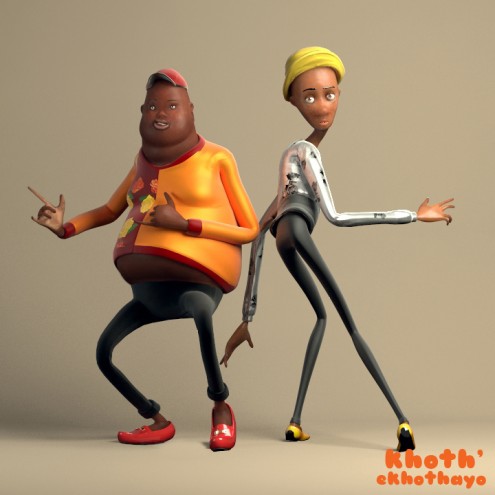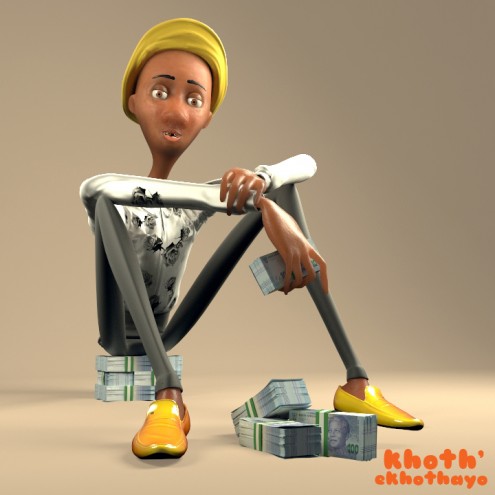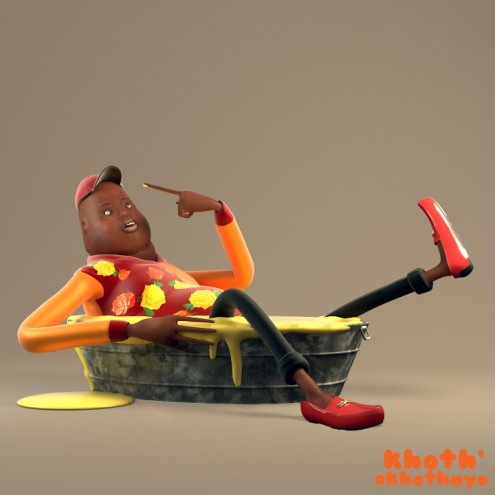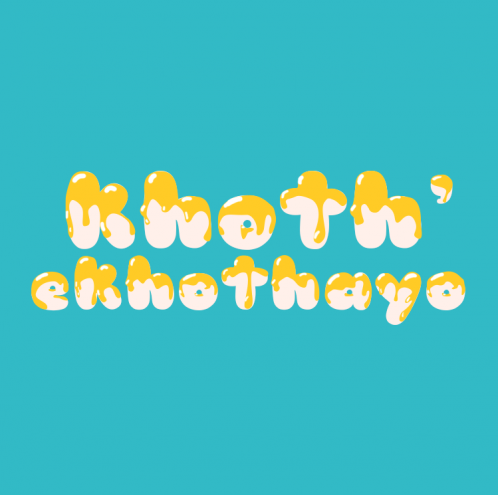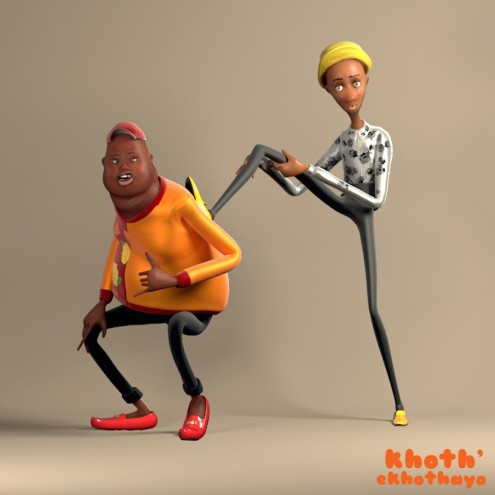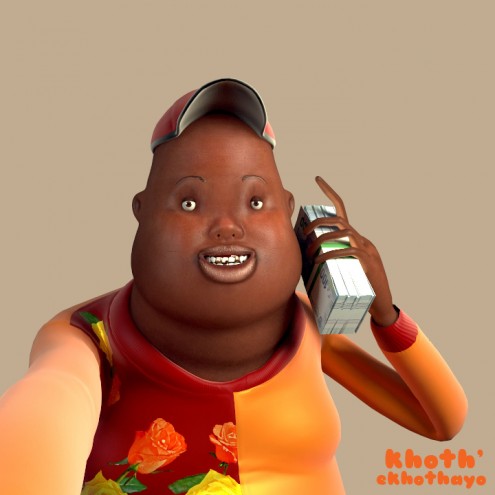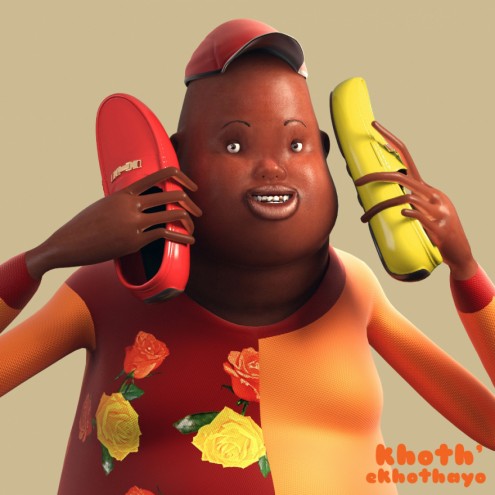From the Series
Joburg-based character design artist Hlanganani Nkambule and animator Melikhaya Ntlangeni are the creators behind “Khoth’ ekhothayo”, a 3D animation-in-progress that depicts the lives of two “Izikhotane”, members of a subculture among young black South Africans where the performance of wealth is king.
The Izikhotane, recognisable by their floral Italian shirts and bright patent leather shoes, organise dance battles where members compete against each other in front of crowds to determine which party is wealthier. These 'battles' are performed using material items such as money, cell phones, clothes and sometimes custard. The battle is won by the intentional destruction of expensive items to show a disregard for material possessions and ultimately to tell your competitor that you can afford more.
The subculture gained notoriety a few years ago when several local TV news channels such as eNCA and international media such as France24 reported on its members’ theatrical activities and extravagant lifestyle.
Although the fascination with Izikhotane has died down somewhat, Ntlangeni and Nkambule are bringing the subculture back to the forefront but shifting focus away from its negative connotations through the use of humour.
The duo met while they were both studying animation at Boston Media House in Johannesburg. Growing up in Grahamstown, Ntlangeni was a big fan of cartoons such as Biker Mice from Mars, Pinky and the Brain, Ed Edd n’ Eddy. And while those are great to watch, he and Nkambule shared a common desire to create a “purely South African” animation, which locals could identify with.
Izikhotane is the idea that stuck because it’s easy to relate to, says Ntlangeni.
The pair have conceptualised two characters, Gwinya and Bullet (follow them on Twitter), who have a distinctive style and flavour recognisable to local audiences.
When the Izikhotane subculture appeared in news media some South Africans were quick to condemn the youth for living extravagant lifestyles beyond their means. Fine Italian shirts and shoes don’t come cheap.
Ntlangeni says that the animation isn’t intended to perpetuate any negative stereotypes but rather “on showing the fact that the extremist lifestyle is not a commendable one in a comedic and entertaining way”.
But like any subculture, there is more than one aspect to the Izikhotane. An important aspect that the creators wanted to get across is the performance: “It’s so unique from any dance style I’ve seen,” Ntlangeni says. He compares it to Pantsula, the high-energy dance form that originated in South African townships in the 50s. The animation explores what makes the practice meaningful to it members.
I see Izikhotane as dancers and pioneers.
The creators are currently storyboarding the first episode, the stills from which capture some of what we know to be classic Izikhotane traits: floral shirts, shiny colourful shoes, piles of money and custard.

